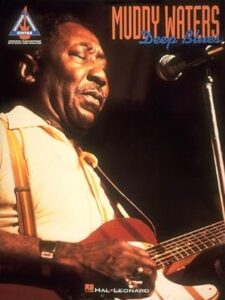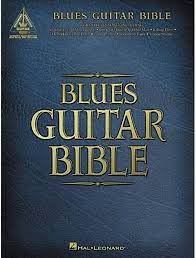Come join us now, and enjoy playing your beloved music and browse through great scores of every level and styles!
Can’t find the songbook you’re looking for? Please, email us at: sheetmusiclibrarypdf@gmail.com We’d like to help you!
Piano Blues Clint Eastwood documentary. Ray Charles, Dave Brubeck, Dr John, Prof. Longhair
Best Sheet Music download from our Library.

Clint Eastwood; “I’ve always felt that jazz and blues were true American art forms. Maybe the only really original art forms that we have.”
Some of the artists that appear in this Documentary:
07:29 Martha Davis 07:50 Dorothy Donegan 09:29 Duke Ellington 17:33 Dave Brubeck 25:27 Dr John 31:33 Marcia Ball 41:13 Muddy Waters 41:33 Otis Spann 44:46 Henry Gray 46:12 Jay McShann 50:26 Pete Jolly

Please, subscribe to our Library.
If you are already a subscriber, please, check our NEW SCORES’ page every month for new sheet music. THANK YOU!

Clint Eastwood (short bio)
Clint Eastwood (San Francisco, 1930) American actor and film director. After finishing primary school, in the midst of the Great Depression, he had to earn a living in various jobs: he was a lumberjack, a bricklayer and a metal worker. After spending four years in the army, starting in 1954 he tried to make a place for himself in Hollywood as a supporting actor. His first performance was in Francis Joins the WACS (1954), by Arthur Lubin, which was followed by some work for television.
It was in Italy where he made fame and fortune with the character of the ‘Man with No Name’, the hero of Sergio Leone’s great westerns: A Fistful of Dollars (1964), Death Had a Price (1965), and The Good , The Bad and the Ugly (1966), considered canonical works of the spaghetti western (low-budget productions based on the American western made in Europe, especially in Italy).
Of the three, The Good, the Bad and the Ugly is the spaghetti western par excellence, somewhere between the forceful expositional effectiveness of the previous ones and the well-understood bombast of the later Until His Time Came (1968). Against the distant background of the Civil War, three unscrupulous criminals known by the nicknames of the title separately follow the trail that leads them to the location of loot, littering the arid landscapes they cross with corpses. As far as the image is concerned, it is a surprising film both in terms of planning and the photography in Technicolor and the panoramic Techniscope, the work of Tonino delli Colli, or in the vigorous editing by Nino Baragli. Filmed in Almería, Ennio Morricone’s soundtrack alone would deserve all the honors.
This trilogy of sorts catapulted Eastwood to stardom, helping to cement his image. His charisma, his tall and somewhat lanky profile and a dry face, with a reduced range of gestures although highly expressive, would eventually make him one of the most appreciated actors in Hollywood.
Returning to the United States, Eastwood founded the production company Malpaso and increased his prestige through his collaboration with director Don Siegel, especially through the character of Harry Callahan, a police officer with very particular ways, tough, violent, self-sufficient and not devoid of cynicism. The first title in this series was Dirty Harry (1971), a film that gave him the definitive boost and from which four sequels would be filmed.
Harry Callahan is the archetype of the tough and violent defender of the law. A man of action, violent and bitter, he takes justice into his own hands and has no other way out than to rebel against the rules that he considers unjust. Moved by his own law, he respects the decisions of authority little or not at all. In Dirty Harry, Eastwood begins chasing a murderer, but after arresting him, justice sets him free again. Callahan is not satisfied with this decision and begins his own private war against the criminal, which ends with his death; Callahan then throws his badge to the ground.
Described by critics as a film with a fascist tone, his followers only see in Callahan a character created based on the principles of the purest romanticism, with his own morals, independence from rules and freedom of action. Little by little, in the following films, the character acquired a greater sense of humor and lost some of his violence. The next installments would be Harry, the Strong (1973), by Ted Post, based on a script by John Milius and Michael Cimino; Harry, the Executioner (1976), by James Fargo; Sudden Impact (1983) directed by himself; and The Blacklist (1988) by Buddg Van Horn.
Throughout the seventies, Eastwood worked for other production companies with which he obtained important successes, such as The Legend of the Nameless City (1969), directed by Joshua Logan, an atypical western filmed in a musical key that nevertheless managed to connect mostly with the public. Eastwood showed signs of possessing a special cinematographic sense not only to intervene in films that brought him money and fame, but also to discover young talents to whom he offered the opportunity to participate in a cinema with important commercial projection; This is the case of Michael Cimino, with whom he worked in A $500,000 Loot (1974).
In the field of acting, Eastwood was becoming an actor who was in line with the old Hollywood tradition, an artist whose presence was felt at the box office and who managed to give personality to films. Still in the 90s, more than one title achieved a triumph with the public and even good reviews as a result of Eastwood’s performance; Such is the case of In the Line of Fire (1993), by Wolfgang Petersen, in which he played a presidential bodyguard on whom the years begin to weigh on him physically and morally.
As a director, Clint Eastwood gradually earned the respect of critics for his classic approach to filmmaking and his ability to handle the action fluidly, without subtracting psychological depth from the characters or dramatic and human strength from the conflicts. raised. On occasions he added to his work as director that of interpreter of his own films, without one activity drowning out the other.
He began with Goosebumps in the Night (1971) and, since the mid-eighties, a series of notable titles demonstrated his worth as a filmmaker. Thus, he directed and starred in The Pale Rider (1985), a western with biblical reminiscences where he managed to update a genre that seemed exhausted by the change in public tastes. His film Bird, based on the life of saxophonist Charlie Parker (a role brilliantly played by Forest Whitaker), achieved great international success in 1988 and increased the respect of critics. In 1989 he directed and starred in a film that did not achieve the success that was expected, but which demonstrated his courage and originality when choosing his approaches: White Hunter, Black Heart. Inspired by the filming of The African Queen, the legendary film by John Huston, Eastwood reserved the character of Huston himself, whose personality he carried out an accurate analysis.
Clint Eastwood’s fertile and at the same time suggestive career as a director found one of its most definitive expressions in 1992 in the unrepeatable Unforgiven. Dedicated to Sergio Leone and Don Siegel, masters of Eastwood’s beginnings in cinema as an actor, Unforgiven is a western that, decades after the apparent death of the genre, manages to recover and compile the entire tradition of it and his own career. by Eastwood. From the Fordian shots in which the women are distributed in a painful choreography on the porches of the town to see the protagonists arrive, this Eastwood masterpiece is a somber and twilight journey through the hero’s fatigue and his impossible redemption.
Eastwood is the former gunman with a past stained with blood, buried under the weight of the horror he experienced, who tries to survive apart from everyone, raising the two children he had with the only woman who could clear his conscience and the pain and death that he inflicted in his youth. Requested to avenge an unjust attack on a prostitute, Eastwood will communicate with the world once again in an overwhelming via crucis, in which he must make painful contact with his darkest part, an impossible adventure in which he has as companions an old friend also away from weapons (the impressive Morgan Freeman) and a young gunslinger who is shortsighted and candidly fascinated by the legend of his mentor.
Unforgiven is a western of impeccable classicism, direct and transparent, irresistibly lyrical; but it is also, at the same time, a sordid tragedy full of sound and fury, inevitably violent, in which the purity of the objectives does not serve to redeem the chaos and hatred that feeds the soul of its protagonist: the destructive ordeal of his final explosion, a true infernal evocation submerged in the omnipresent visual gloom that presides over the film, is not only disconsolate in the context of fiction, but also as a somber warning of the climate of violence that was felt in the United States during the Bush era. The film received, among others, the Oscar for best film and best direction, and established Clint Eastwood as one of the wisest filmmakers of the moment.
If Unforgiven is Eastwood’s definitive western, in a way The Bridges of Madison (1995) was his definitive melodrama, in a decade in which the creative talent of its director was in an unrepeatable state of grace. The Bridges of Madison is a brave melodramatic proposal supported only by the love of cinema, a prolonged rondo between two characters (Eastwood himself and an excellent Meryl Streep) who evolve before a camera fascinated by each of the gestures, the looks. , of the words that address each other.
The tremendous emotional catharsis that Eastwood is capable of arousing through the image is transparently revealed in the captivating final third, in which the sentimental suspense reaches levels of unusual nudity, something that is also found in the splendid A Perfect World (1993). , a melodramatic thriller of sentimental initiation between an escaped convict (Kevin Costner) and a child kidnapped by him during his escape. Eastwood’s overwhelming classicism leads him, throughout his filmography, to a limpid recovery of the best traditions of American cinema, with admirable aesthetic and ethical honesty, something that, as has already been said, derives from the passionate lessons learned. of John Ford, as well as his blood brothers Siegel and Leone.
After several decades of professionalism, Clint Eastwood is considered a master of direction, and it is even appreciated that his acting work has improved over the years. Artistically ambitious, his style always aspires to perfection, both acting and directing, a pursuit that has not been incompatible with box office success. Among his latest films, the aforementioned A Perfect World (1993), Midnight in the Garden of Good and Evil (1997), Imminent Execution (1999) and Space Cowboys (2000) stand out.
Mystic River (2003) received several awards at both the Golden Globes and the Oscars, especially for its male actors, Sean Penn and Tim Robbins. The same thing happened with Million Dollar Baby (2004), a tragic drama about a woman who insists on being a boxer in order to succeed in life, for which she establishes an intense relationship with a former boxer who is dedicated to training. Starring the director himself, and Morgan Freeman and Hilary Swank, the film won four statuettes at the 2005 edition of the Oscars: best director, best film, best actress and best supporting actor.
In 2006, the actor and filmmaker directed Flags of Our Fathers and Letters from Iwo Jima, two films that refer to the same moment in history (the battle of Iwo Jima, at the end of World War II), but seen in the first case from the American perspective and in the second from the Japanese. At 76 years old, Eastwood gave a new twist to his long career with a profound meditation on the essence of heroism, analyzed from a position of absolute independence.
